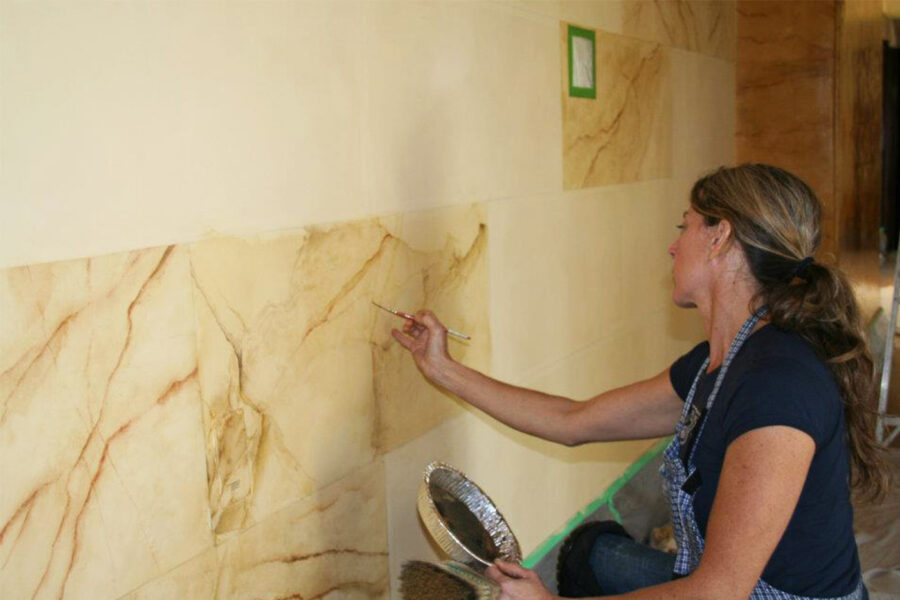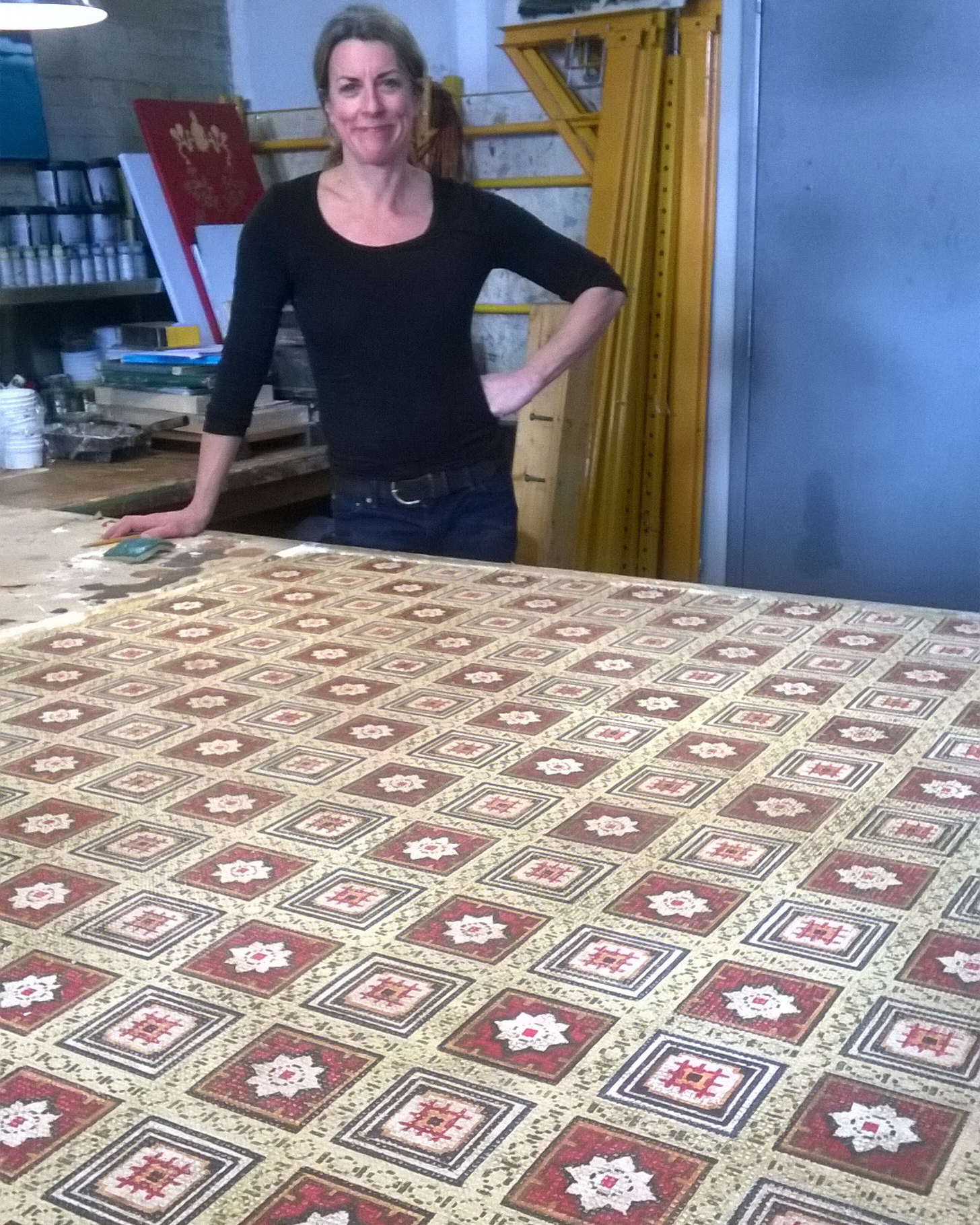
Restoring Hamilton Heritage: An Art Set in Stone
- Julia Kollek
- 11 Apr 2019
Beauty sells. And in the real estate market a marble countertop is viewed as a huge selling point. The revered stone, which is literally quarried in slices from mountains, has been a status symbol for centuries. But it wasn’t always easy to get or to buy.
The solution was to hire craftsmen to create faux marbling instead. The ancient Greeks loved this fake stonework. It was cheaper to paint the distinctive veined pattern than to ship or install the genuine material. And when done well, it was hard to tell the difference.

When Lori Le Mare was first shown a faux marbled vase, she refused to believe it was an imitation. It just looked so real. Years later, she would adopt the skilled technique in her work as a heritage restorer.
The entrance hallway at Dundurn Castle was her first project in Hamilton. Back in the 1830s, Sir Allan MacNab commissioned his lavish home to be built and most likely chose to cover his walls with faux marbling as an economy measure. And that’s how they stayed for 20 or so years.
Over time, they were covered with grey paint and even black wallpaper until Kenneth Heaman, Dundurn’s senior curator, decided it was time the original features were brought back to life.
Lori was set stringent restoration standards: the work had to be carried out using exactly the same methods used by the original craftsmen. The notable exception? She was a woman — unlike the 19th century workmen.

The stipulated authenticity meant the team couldn’t use many of the tools we take for granted when embarking on a regular house painting project: no masking tape, no rollers (brushes only), and they had to use a spirit level and a plumbline to draw the grout lines straight with a bird’s feather to create the marbling effect.
The first step was to send wall surface samples from the uncovered original faux marbling to a lab for analysis. It turned out that the base coat was oil, followed by a water-based solution, with oil applied again for the final coats. The fake marble veining was beer mixed with paint pigment, a common practice at the time. Back in the 1830s, ale was plentiful because it was safer to drink than water and the residents of Dundurn were no exception.
Not many people head to the LCBO to buy Guinness to use as wall paint. But then again, Lori’s work is definitely out of the ordinary. Although an accomplished and well-known decorative painter, artisan and heritage restorer, she never made it to art school, even though it was her dearest wish at the time. “I lacked the confidence, and had no portfolio when I left high school,” she said.
So she studied English instead, and in the 1980s helped to start the first decorative painting school in Canada. She and her partner learned from masters in the UK, and then took keen students on decotourism classes to restore castles and chateaus in France and the US.
The thirst to study decorative painting peaked — and then waned, but Lori senses that design is making a comeback. This September she plans to start up a new school alongside to her workshop at the Cotton Factory. She’ll be teaching those looking to work professionally as set designers or painters for the film and theatre industry, as well as hobbyists interested in learning techniques such as gilding, marbling and stencilling.
In early May, she’ll be teaching a painted oilcloth class, where participants learn to make their own decorated floorcloth, a craft that dates back to the mid-1700s. Damaged examples of these were found in rooms at Gage House in Stoney Creek Battlefield Park and Lori reproduced them.
When you go there, check out the illusory tromp d’oeil room and staircase she installed on the second floor, a re-creation of features that were lost when part of the house was demolished – but have now been painted back to life.
Comments 0
There are no comments


Add comment